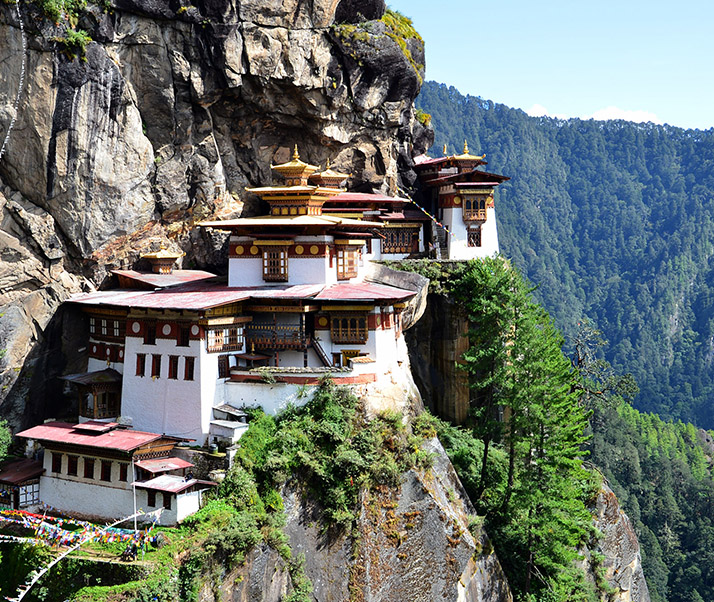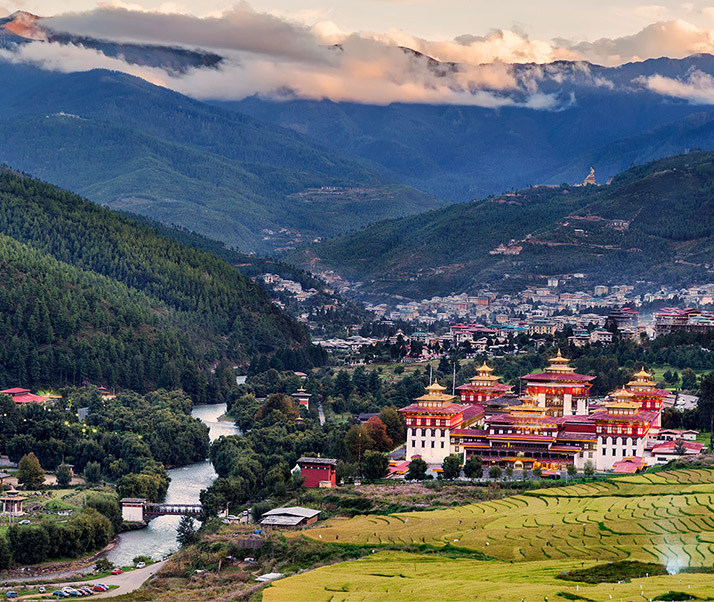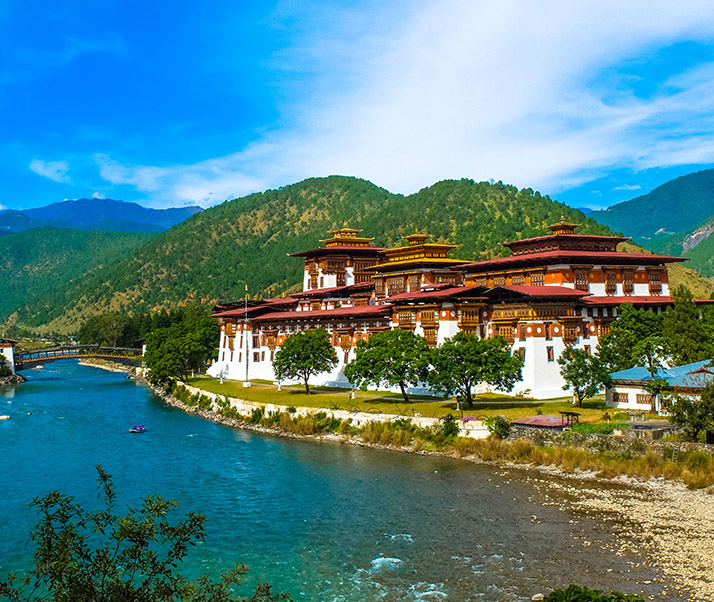+91 9884683139
talk to our Destination
specialist

Largely untouched by tourists, now is the time to flee to this mysterious kingdom.
Holding up its Gross National Happiness ethos, Bhutan is for both the curious and the adventurous. Having opened its doors to travellers only in 1974, many worry about the ease of entering Bhutan, but with us, it’s as easy as riding a bike. Spend your days winding through verdant valleys, gazing at elegant dzongs and hiking to cliff-hugging monasteries. Meet with orange-robed monks, spiritual incense makers and meditation masters in between. Time it right and we’ll arrange a Buddhist festival in the heart of Bhutan when back on the ground.
The Kingdom of Bhutan is a small landlocked country located in the southern foothills of the Himalayan mountain range, sandwiched between the People's Republic of China in the north and the Republic of India in the south.
Southern Bhutan has a hot and humid subtropical climate that is fairly unchanging throughout the year. Temperatures can vary between 15-30 degrees Celsius (59- 86 degrees Fahrenheit). In the Central parts of the country which consists of temperate and deciduous forests, the climate is more seasonal with warm summers and cool and dry winters. In the far Northern reaches of the kingdom, the weather is much colder during winter. Mountain peaks are perpetually covered in snow and lower parts are still cool in summer owing to the high altitude terrain.
Key Facts
7,50,000
Thimphu
Ngultrum
Dzongkha
GMT +6
Feb-Jun / Sep-Nov

The altitude zones of Bhutan - The relief of Bhutan can be divided into three altitude zones, namely, the the Greater Himalayas of the north, the hills and valleys of the the Inner Himalayas, and the foothills and plains.
Bhutanese people can be generally categorized into three main ethnic groups. The Tshanglas, Ngalops and the Lhotshampas. The other minority groups are the Bumthaps and the Khengpas of Central Bhutan, the Kurtoeps in Lhuentse, the Brokpas and the Bramis of Merak and Sakteng in eastern Bhutan, the Doyas of Samtse and finally the Monpas of Rukha villages in WangduePhodrang. Together the multiethnic Bhutanese population number just over 700,000.
Though Bhutan is a Buddhist Country, the Bhutanese constitution guarantees freedom of religion and citizens and visitors are free to practice any form of worship so long as it does not impinge on the rights of others. Christianity, Hinduism and Islam are also present in the country.
While Bhutan is one of the smallest countries in the world, its cultural diversity and richness are profound. There are a wide variety of elaborate and colourful festivals that are celebrated throughout the country.
The national language is Dzongkha, the native language of the Ngalops of western Bhutan. Dzongkha literally means the language spoken in the Dzongs, massive fortresses that serve as the administrative centers and monasteries. Two other major languages are the Tshanglakha and the Lhotshamkha.
Rice forms the main body of most Bhutanese meals. It is accompanied by one or two side dishes consisting of meat or vegetables. Pork, beef and chicken are the meats that are eaten most often.

Hike the Steep Path to the Tiger’s Nest
Explore the Drukgyel Dzong, an imposing ruin built in the 17th Century
Visit Namgay Artisanal Brewery, which holds the Bhutanese Beer Festival every year

Bhutan’s Beautiful Capital
Explore Thimpu, the capital city, which does not use the Traffic Lights
Drive to visit the Dochula Pass, a cultural Icon & offers 360-degree panoramic views of Himalayas

The Warmest Valley in the Last Himalayan Kingdom
Ascent to the Khamsum Yulley Namgyal Chorten, be a messenger of Peace
Walk Past Punakha Suspension Bridge to Pump in Some Adrenaline